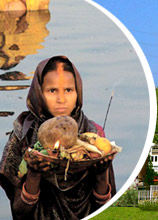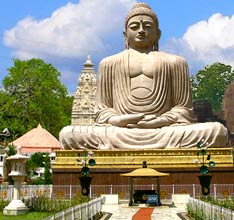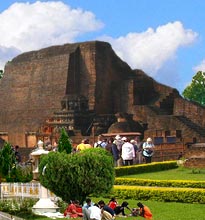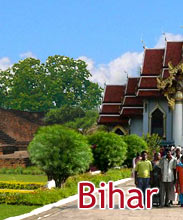Over thousands of years various traditional dance forms have evolved in Bihar. The folk dance tradition in Bihar can be divided into three groups. First, the dance performed during poetry performance. The second stream is those of the tribal people who are closer to mother earth and their dances are heavily influenced by indigenous development. The third stream relates to the other regions of south Bihar. Most of the folk dances are religious in nature, in which, gods and goddesses are invoked through dance, performed to the rhythm of folk songs and music.
Bidesia
Bidesia is the most popular folk dance of Bihar people. The dance is said to have originated in the 20th century. It is a folk theatre form that is prevalent in the Bhojpuri-speaking regions of Bihar. Bhikari Thakur is believed to be the father of this dance style. He raised conflicting issues prevailing in society. Conflicting trends between rich and poor, upper class and lower class, upper caste and lower caste, urban and poor dwellers etc were his themes. He used dance as a form to put his views onto ground and among people.
Biraha songs combined with dance become an effective medium. Bidesia is a dance version of Biraha songs. Biraha songs are portrayal of pain of the women who are left alone behind by their men, away from home. Males play the roles of female in Bidesiya dance and for the purpose; they wear artificial long hair and dhoti. Despite the fact that many new modes of entertainment has come up, Bidesia still has its charm amongst Biharis.
Paika
Another popular dance form of Bihar is Paika. The dance reminds us of infantry and its agility, courage, and excitement. The dance is popular particularly in the Mayurbhanj region. A flat ground is essential for its performance. This dance displays the skills & the ability of the dancers to handle these weapons. The dance reaches its climax with the fast beats produced by `Mandal`. Performers wear colorful turbans and tight dhotis and stand in two rows. Holding the wooden swords and shields in their hands, warriors engage in a fierce mock combat.
Jhijhian
Jhijhian dance is another dance style popular in Bihar. This is a ritualistic dance performed during no-rain time and aims at making the God of rain happy. The dance is accompanied by a song which is full of prayers to Lord Indra, the rain God. The participants of the dance include a lead singer, harmonium player, a flute player, and a dholak player. This is woman only dance show.
Kajari Dance
Kajari songs are basically sung during monsoon season. The dance form called Kajari Dance accompanies these songs. The dance starts in the month of ‘Shravan’ or the starting of the monsoon season every year and lasts for the entire duration of rain. These songs describe how wonderful earth has become due to rain and how happy and pleasant people are. These songs, combined with dance, are showcase of rich culture and tradition of Bihar.










